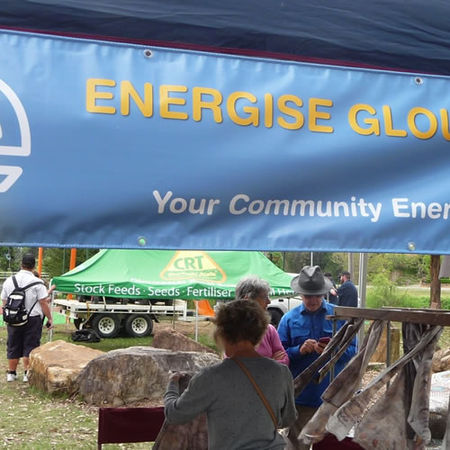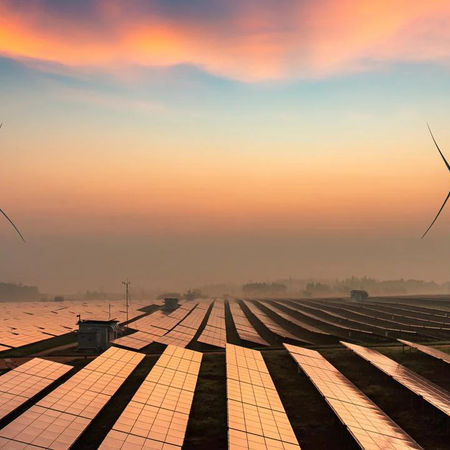
Chairman’s Note

The highlight for Energise Gloucester this month was our second Public Information Night.
Over 50 people took the opportunity to come and ask questions, express their concerns and to discuss various aspects of community energy. There were several presentations on topics such as how much electricity can generate on your roof, should you use batteries as a back up, power purchase agreements (PPAs), prices for PV (solar panel) systems, maintenance and off-the- grid issues.
Speakers from the floor gave us valuable information about their energy generation and usage. There were many questions that stimulated interesting discussion and good information exchange. Not all questions could be fully answered so it is worth indicating some websites that could give further information.
- PPAs look at energymadeeasy.gov.au or powershop.com.au or enovaenergy.com.au
- For system prices and batteries look at solarquotes.com.au or energymatters.com.au
There was a presentation on the various forms of Community Energy in Australia and how Energise Gloucester is picking up on these ideas and projects. Further information is available at cpagency.org.au/about-community-energy/
We also heard about Uralla as a Z-NET town and what this means for their project on becoming more energy efficient. There is an article on this exciting project in this newsletter. We are planning to have four of these events a year, so stay tuned for the date of the next one.
Yours with energy,
David Marston (Chairperson)
Hot Water and Solar PV Feed-In
Many of us are thinking about what to do with the ‘excess’ electricity that we are now generating and only getting a feed-in tariff of 6-12 c/kWh. We probably also have a hot water system that is connected to a ‘controlled load meter’. These were called off-peak water heaters as the electricity supplier turns on the power to these systems at its discretion and this is mainly in ‘off-peak’ periods when electricity demand is low, That is, the supplier controls the timing of the heating and usually charges you a lower rate per kWh.
This controlled load rate is probably about 11-13 cents per kWh which is more than your feed-in rate. Therefore, it makes sense to use your solar electricity to heat your hot water rather than paying for ‘controlled load’ rates. If you cancel the ‘controlled load’ facility you can also save the supply charge for this which is about $40-50 per year.
To get these possible savings you need to change your hot-water system from ‘controlled load’ to ‘general tariff’. Then install a time clock so that it only heats the water during hours of the day when you are likely to generate solar electricity. Of course, you might not generate everyday for a range of reasons and therefore you will be paying the general electricity charge rate for power used during such periods. You also need to install a switch so that you can boost the heating if required. This switching system will need to be installed by a licensed electrician and will cost $200 - $300. Working through these financial calculations can be a bit complicated so unless there is a big difference between your solar feed-in rate and your controlled load rate it will probably not be financially sensible.
Another way to reduce your hot water cots would be to change from an “off-peak” system to a heat pump system. A heat pump system operates like a reverse cycle air-conditioner to heat the water rather than a room. It could be wired to use your solar PV generated electricity in preference to purchasing ‘general rate’ electricity from your retailer. Again you would need a switch to boost the hot water on non-solar generating days. This change of system is probably only financially feasible if you need to buy a new system.
However, it is worth doing the calculations now so you know what to do when your existing system breaks down and you need to make a quick decision.
If you have a large amount of generated PV solar that you are not using in the house it is probably better to consider one of the above options for hot water rather than installing a solar hot -water system. As always, you need to do the financial calculations, including any government rebates for each system.
While thinking about hot water it is probably worthwhile to change your washing machine and dishwasher from using hot to cold water and operate them during the day. This way you are using your solar electricity to heat the water rather than paying your retailer for electricity to heat the water.
An Exciting Project at Uralla
Z-NET Uralla presented their Zero Net Energy Town (Z-NET) project at the Gloucester Sustainable Futures Convention earlier this year in March. We were excited to find that they are doing many of the things that we are planning and that we will be able to use much of their work to reduce the time needed to implement community energy programs in Gloucester.
Z-NET, which stands for Zero Net Energy Town, is a pioneering initiative developed by the not-for-profit Starfish Initiatives. Their objective is to support towns and villages throughout Australia to satisfy their own energy needs from renewable energy sources in away that is competitive with current energy sources (in terms of price, quality, reliability, security of supply and so on).
Z-NET begins with the creation of a blueprint and business case for the concept. Uralla has been the first town to benefit from their work, with a case study being undertaken in conjunction with development of action plans for the town.
The town of Uralla is therefore now taking the first steps in an exciting journey towards a renewable energy future. T Uralla team have assessed a number of ways in which they might reduce their net energy to zero, using the Z-NET blueprint model (see diagram). The aim is to find the cheapest ways to achieve zero net energy.

The goal of being a zero net energy town can be furthered in a number of ways ("What's Possible" on the diagram); through using less energy, generating energy on-site (e.g. through rooftop solar), generating energy nearby or purchasing energy through the electricity network from a renewable source.
The research in Uralla concluded that the first and cheapest action is to reduce overall energy usage by running energy-saving programs with businesses and homes in their town. They expect to reduce their energy use by approximately 15% due to these energy efficiency measures.
Energise Gloucester is also in e planning stages of an energy efficiency program, We hope that being able to use the materials and approach developed in Uralla will enable us to get the program up and running very quickly.
The next steps for Uralla include assessing generation of energy on-site - for example, rooftop solar on homes, shared solar on multiple resident buildings such as blocks of flats or retirement villages, or rooftop solar for community buildings or businesses.
For more information, go to http://starfish-initiatives.org/ initiatives/znet-zero-net-energy-town/. The blueprint (two A3 pages) and an early report of the Uralla case study (70 pages, from October 2015) are both available on this web
Do you know the Answer ?

What are the three Rs for a clean environment:
A: Recycle, reuse, redo
B. Remember, recycle, recreate,
C. Recycle, reuse, reduce
D. Refer, recreate, redo
Be the first person to send the correct answer by email to the editor@energisegloucester.org and receive a complimentary coffee at The Fox Den.
The answer to last month’s question: At the end of March 2017, 3 Power stations have closed in Victoria since 2012 :
Anglesea, Energy Brix and Hazelwood.






